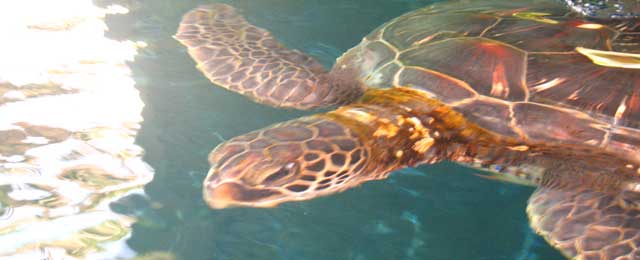(Chelonia mydas)
This species can weigh between 300-500lbs and measure as much as 5 feet in length. They have a hard, teardrop-shaped olive brown shell with blotches or streaks of colour and a pair of large, paddle-like flippers. Unlike the closely-related hawksbill turtle, the green turtle’s snout is very short and its beak is unhooked.
The extent to which green turtles historically nested in Trinidad and Tobago remains unclear and reports of nesting are rare and sporadic. There still remains a small offshore population that inhabits seagrass beds around the islands.
In the Caribbean, this species has been particularly hard hit by the highly contagious fibropappilomas virus. This virus produces debilitating tumours that if left untreated can be fatal. There is currently no known cure. Green turtles have been hunted for many centuries for their meat and their gelatinous calipee (body fat) that is made into soup. They are listed as endangered worldwide. Although ALL species of sea turtles are legally protected in T&T, the Green Turtle population remains in a critical state due to overharvesting and poaching.





